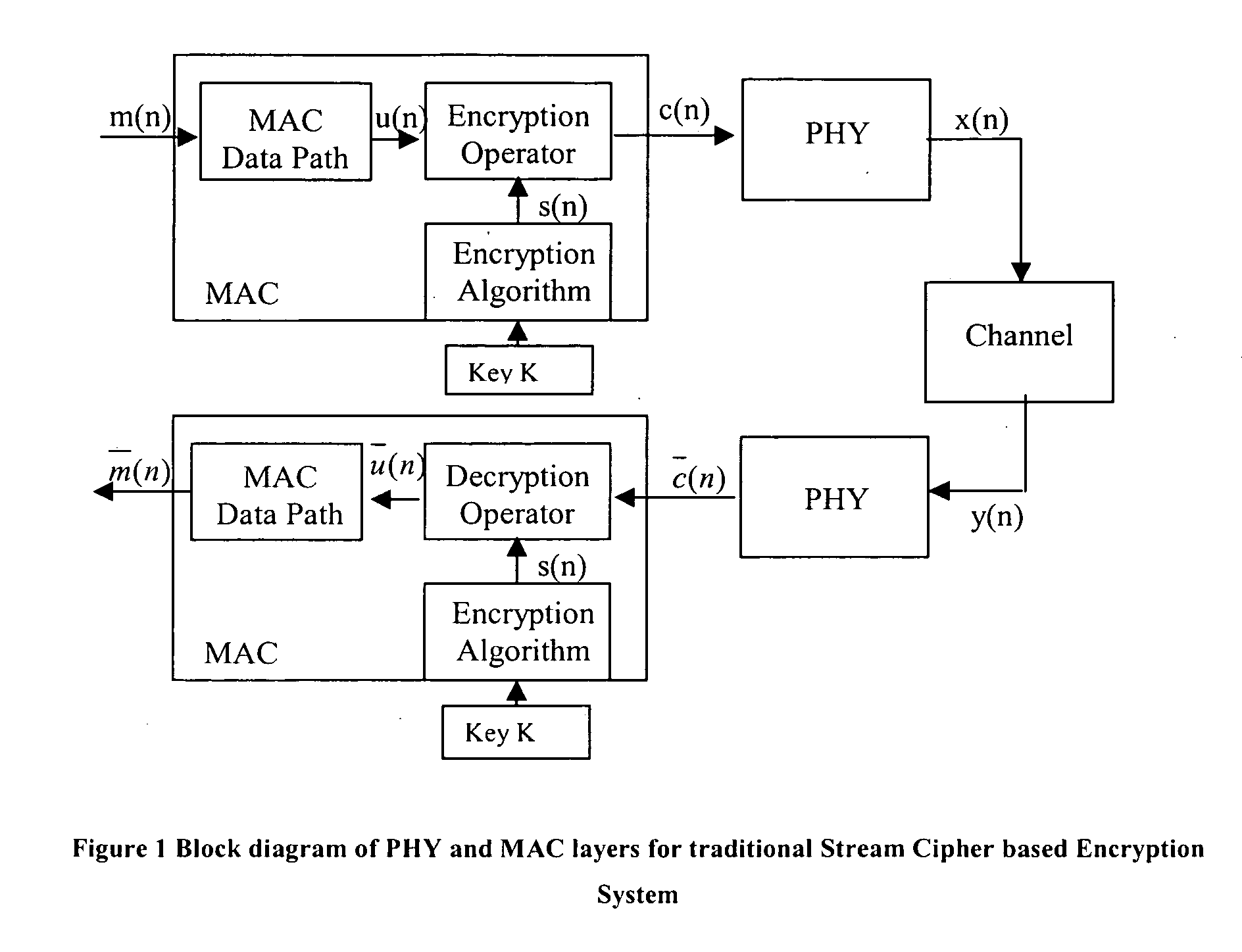Method and apparatus for a security system for wireless networks
- Summary
- Abstract
- Description
- Claims
- Application Information
AI Technical Summary
Benefits of technology
Problems solved by technology
Method used
Image
Examples
Embodiment Construction
[0040] Referring to the drawings, the reference numerals in the drawings are self-explanatory.
Traditional Stream Ciphering System
[0041] A high-level block diagram of the physical (PHY) and medium access control (MAC) layers for a stream ciphering system is shown in FIG. 1 of the accompanying drawings. The input to the MAC layer is the data that the user wants to transmit, also called plain text. The encryption process occurs at the MAC layer and the output of the MAC is encrypted data, also called cipher text, which is passed to the PHY layer for transmission. At the receiver end, the data is processed by the PHY and the estimate of the transmitted data (cipher text) is obtained. The PHY performs a parity check on the decoded data and if there is a mismatch the packet is discarded. The cipher text is passed on to the MAC. The MAC decrypts the data and passes it to the higher layers.
[0042] If the input to the MAC is represented as m(n) (n is the sample number). After passing thro...
PUM
 Login to View More
Login to View More Abstract
Description
Claims
Application Information
 Login to View More
Login to View More - R&D
- Intellectual Property
- Life Sciences
- Materials
- Tech Scout
- Unparalleled Data Quality
- Higher Quality Content
- 60% Fewer Hallucinations
Browse by: Latest US Patents, China's latest patents, Technical Efficacy Thesaurus, Application Domain, Technology Topic, Popular Technical Reports.
© 2025 PatSnap. All rights reserved.Legal|Privacy policy|Modern Slavery Act Transparency Statement|Sitemap|About US| Contact US: help@patsnap.com



